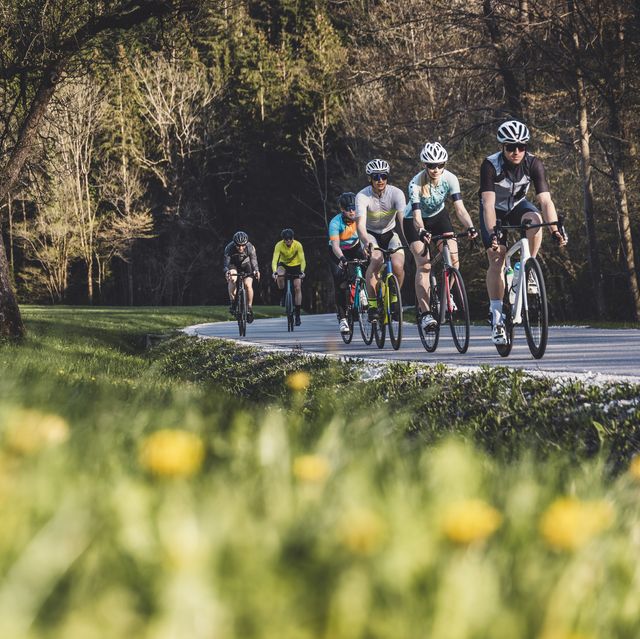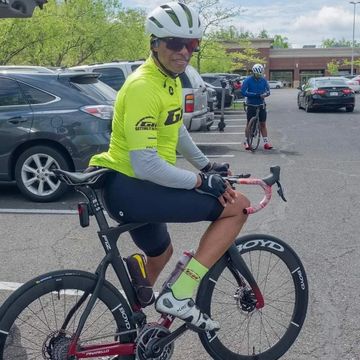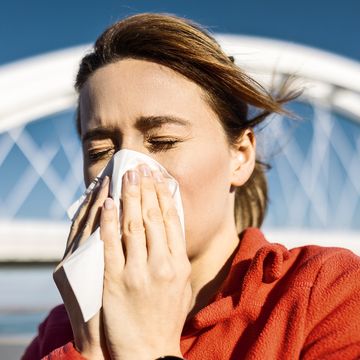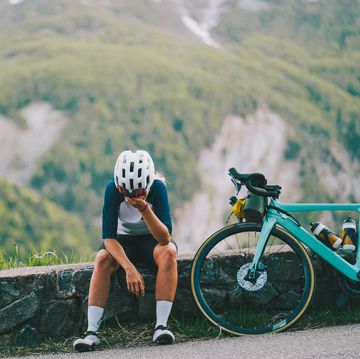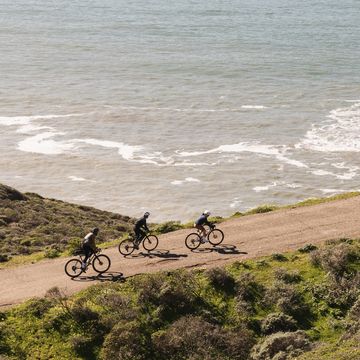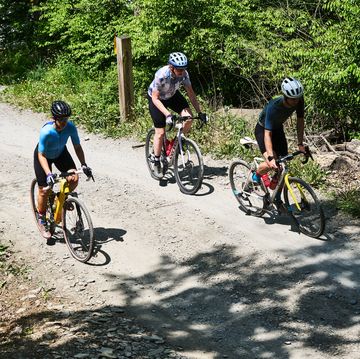When the weather starts to get warmer and the sun shines again, the excitement to kick off spring cycling tends to skyrocket. No more layering up to brave the elements or finding time to squeeze in a ride midday to avoid darkness.
While it’s arguably the best time to embrace the motivation to ride, you also want to make sure you don’t overdo it and end up getting injured or burning out. To keep your training in check while taking full advantage of the spring cycling season, follow these tips for how to make the most of these next few months.
1. Don’t Go Too Hard Too Soon
Instead: Build Your Base First
Amping up your training volume significantly overnight can lead to tendonitis and burnout, and can rob you of the metabolic advantages gained from easier base miles.
Crank the intensity slowly while building overall training volume by 10 to 15 percent per week. For example, if you’ve been riding eight hours weekly, increasing to 10 is completely feasible. You can also add in a few sets of 30-second on-off efforts. Try six 30-second efforts with five minutes rest between sets. Do a few sets two to three times per week to give yourself time to recover.
2. Don’t Miss Out on Group Rides
Instead: Use Friends to Boost Your Skills
I’ve often heard people say they want to improve their fitness before joining a group—but this is where you’ll earn your stripes, get your pack riding skills up to speed, and gain the much needed variable intensity that will boost your fitness quickly.
The camaraderie of the group is also a great competitive motivator. Riders around you push you through tough bouts of training and can help you go the extra miles (literally) when you would normally want to quit.
3. Don’t Do the Same Old Intervals
Instead: Switch Things Up and Vary Your Zones
The old-school prescriptive methodology of long blocks of tempo and threshold work have been played out. Spring is the time to spice things up with zone ladders, over/unders, and ramp sets.
Ladder workout: Start with five minutes at zone 3, three minutes at zone 4, one minute of zone 5, then work your way back down. As fitness improves, increase time at each zone or perform multiple sets.
Over/unders: Over/unders can be done in many combinations depending on your goals. Try a 12-minute block with three rounds of three minutes at zone 3 and one minute at zone 5. Take eight minutes of rest between sets.
Ramp sets: Ramps are just what they sound like: You build from one zone to the next and top out with a max effort. Experiment with the length of time at each zone, beginning with five minutes at zone 3, four minutes at zone 4, and two minutes at zone 5.
4. Don’t Skip Cross Training
Instead: Add in Strength Work
Don’t lose all that strength and core stability you built in the winter months (because hopefull you picked up some weights in that time!). Focus on taking at least two days per week to maintain these training adaptations with strength workouts mixed into your schedule—after all, as the old adage suggests, if you don’t use it you lose it.
To save your energy for riding, you can reduce volume while keeping the load high. Three sets of two to four heavy reps will maintain strength and not induce the fatigue associated with heavy lifting.
Building volume and intensity is guaranteed to increase fatigue, and may bestow some new aches and pains—so it’s important to remember to add recovery practices to your schedule, too. A yoga session done two to three times weekly will work wonders for your recovery and comfort on the bike. Another trick is to keep your foam roller in a visible place so you remember to roll out tight hamstrings, glutes, quads, IT bands, and lower back after your ride.
5. Don’t Forget About Fueling
Instead: Focus on Healthy Eating
Nutrition is often an overlooked part of training, even though it’s crucial to staying healthy as you kick up your ride time.
To have the energy to ride longer and/or more often, you need fuel to make it happen. That means paying more attention to getting the carbs you need before, during, and after workouts, along with protein to help your body recover and rebuild. Go for simple carbs before you hop in the saddle, like a bagel or cereal, and aim for a carb and protein snack or meal after you’re done, like a turkey sandwich or Greek yogurt with granola.
